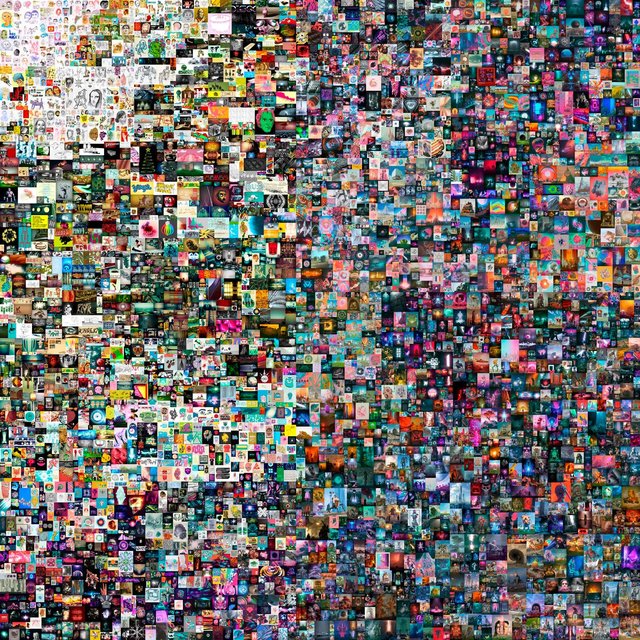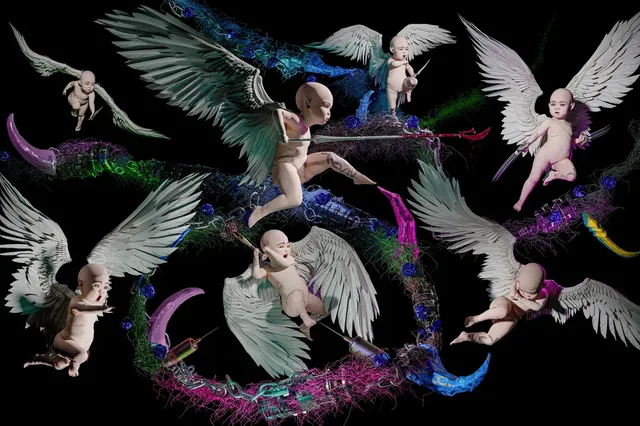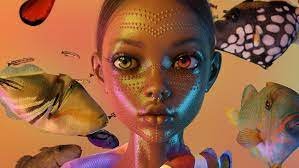How NFTs are transforming the art world
A massive intersection between the worlds of art and cryptocurrency is redefining the concept of ownership in the digital age—all to the tune of millions in sales for savvy artists. The surge of non-fungible tokens (NFT) allows virtual images, and their original underlying code, to be sold as unique works of art, even if copies of those same images proliferate.

This evolution was evident Thursday, when a purely digital work of art by Mike Winkelmann, known as Beeple, sold for a record-breaking $69.3 million at a Christie’s online auction. It was the third most-expensive work of art sold by a living artist, and the most expensive digital asset to ever sell with a NFT.
The buyer of the work was revealed Friday as Metakovan, the pseudonymous founder of Metapurse, the world’s largest NFT fund. The buyer will receive both the image and the token, according to Christie’s.
The online world produces no shortage of art from photo edits to memes to animated GIFs. Meanwhile, any physical artwork—from drawings to paintings to photographs—can also exist as digital imagery. Once transformed to 1s and 0s, that artwork can proliferate throughout the internet and end up just a simple screen capture away from your computer.

A NFT, once assigned by an accepted blockchain clearinghouse, attaches to the digital artwork permanently and marks it as original, official, and unique. That NFT allows a buyer to own the artwork, even if copies of it exist on hard drives and servers around the planet.
In the last month, cryptocurrency NFTs sales have boomed throughout the art world. According to the ranking site CryptoSlam, the top five NFTs during that period generated more than US$366 million in profit. The boom has everyone from artists to academics exploring what it means to own something in a crypto world.
Marc Craig, successful London artist and curator of the Chopperchunky Gallery, sold more than 12 of his original pieces as NFTs in less than two weeks. He discovered this crypto market through online news articles, realizing the potential to create individual digital art pieces stamped as exclusive entities.
“There is a real sense that the pandemic is changing everything,” Craig says. “People are actively looking for ways to not only make money, but also to connect in the online world. The NFT art community is very vibrant and supportive, and I had no anxieties about getting started because it was easy to connect with the energy it’s creating.”
Craig describes an NFT world of unusual synchronicity. He sees artists who both sell their work as NFTs and also buy NFTs from other creators. He finds collectors who sell are becoming artists themselves. He tracks corporate entities funding the purchases of major NFT artwork.
In Los Angeles, artist and portrait photographer Justin Aversano creates his own work and collaborates with partner Nicole Buffett (Warren’s artist granddaughter). Through their individual and combined works, they sold more than 130 pieces in two weeks to the tune of more than $100,000. He describes the emerging NFT phenomenon growing from a sense of community.
“We help each other,” Aversano says. “Those of us who found success in NFT art look to bring in other artists and help them through encouragement and collaborations.”
For Aversano, one of the most unique aspects of selling through the blockchain world is the actual physical artifact outside the crypto environment is still in play even once its digital cousin sells. Artist and buyer can negotiate what’s to become of the real world creation. Artists sometimes include the original with the NFT, charge an additional fee for the object, sell the hardware piece to another buyer, or simply keep it.
Aversano retained the material originals for some of his more recent NFT successes and hopes to gift them to a gallery or library for permanent display.
Beeple's "Everydays: The first 5000 days"
Christie's
“With NFTs, the physical work is actually a bonus,” Aversano says. “The buyers of NFTs don’t want stuff. They view ownership in an entirely new way.”
Deborah Small, a professor at the University of Pennsylvania Wharton School of Business disagrees, pointing out that the idea of owning an NFT isn’t that far removed from the concept of owning something in the material art world.
“The concept of art is much more than the experience of seeing it,” Small says. “You can go visit the Mona Lisa in the Louvre or buy it as a postcard—but, you don’t own the Mona Lisa. By purchasing an NFT, you buy the implicit knowledge that you’re closer to the art’s curator.”
Small suggests cryptocurrency investors buying NFTs are more akin to gamblers, making a buying decision on a different level than traditional investors.
“It’s a decision based on a consumption idea, not a business idea,” she says. “The cryptocurrency buyer perceives risk in a different way. It can seem strange to others because the NFT is virtual, but the buyer sees it, likes it, and buys it so he or she can feel closer to the artwork, the artist, and their peers.”
Dr. Carey K. Morewedge of the Boston University Questrom School of Business studies how cognitive processes influence human judgments and decisions. When considering why art buyers would spend millions purchasing NFTs for images they could pull off the internet for free, Morewedge looks at the concepts of control. At its simplest level, the non-fungible tokens allow buyers to take possession of the digital as they would otherwise seize on the physical at purchase.
“Our identity is expressed through what we own,” Morewedge says. “A buyer pays money for the NFT so they control that piece of art because we exert control over our world through ownership. The idea of making something uniquely your own is very powerful. It’s what’s called the ‘endowment effect’—we value what we own over the same thing we don’t own.”
Morewedge suggests that the early NFT sales bringing in seven figures exploded onto the scene due to their historical significance.

“The NFT is changing the perception of ownership through user-generated content,” Morewedge adds. “It could signal the start of redesigning how platforms are monetized by changing concepts of who owns the material—by determining ownership through blockchain and not governmental means.”
Back in London, Craig sees the NFT experience so far as a rollercoaster ride.
“I don’t see the market slowing—all thanks to the pandemic,” Craig adds. “The physical art world may need to play catch up out there.”